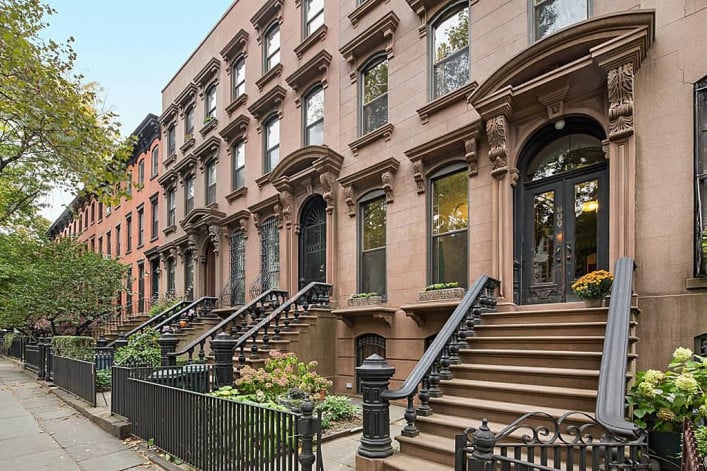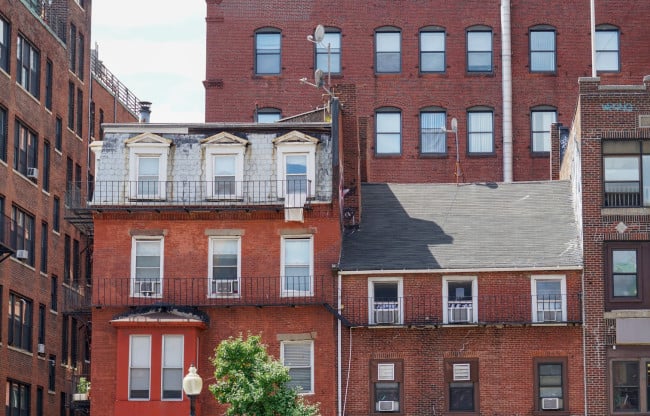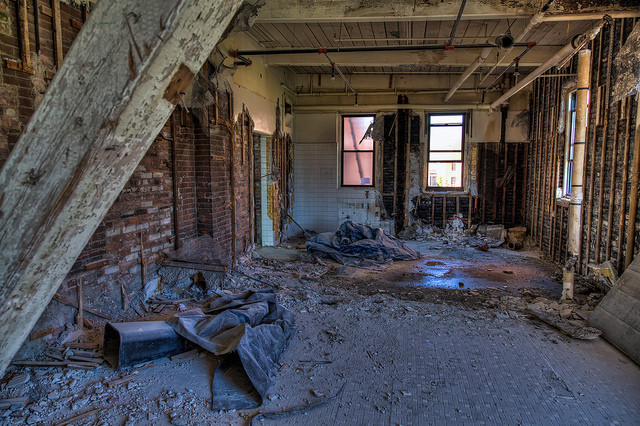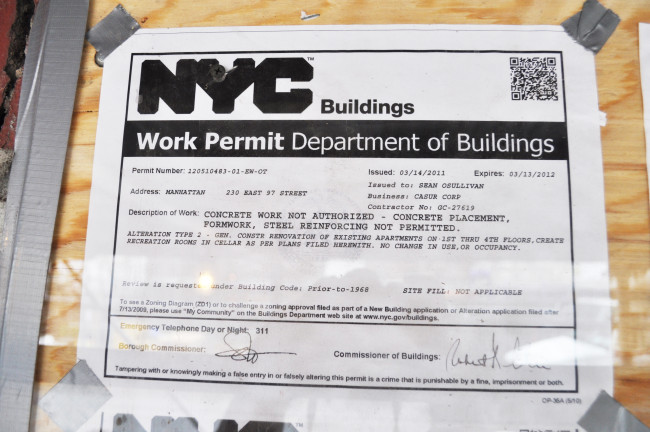7 hidden costs of renovating a brownstone
So you’ve purchased a New York City brownstone, and have prepared for all the relevant—but unexpected—costs associated with owning it. But these are old buildings, so there’s a good chance the spending won't stop there, with upgrades waiting in the wings or, even if you haven't gone into the purchase with plans for an overhaul, a total makeover. For historic homeowners who may have a vision of designing their dream brownstone, there are plenty of hurdles to clear.
As Gary Zaremba, the president of New York company Artisan Restoration Group, puts it, while renovation can sound exciting and even fun at the outset, “the cost will be larger than you think, and the process will take longer than you think.” While this is true of most real estate restorations and facelifts, brownstones are a particular beast. Here are the unexpected costs to prepare for before you take on your own project, and a few tips to avoid headaches along the way:
Assembling the right team
Before you hatch any schemes to open up the floorplan or replace the kitchen, you must assemble the right team—everyone from the architect, contractor, structural engineer to expediter. “When people get this part wrong, they spend the most money and time on their projects,” says Fraser Patterson, founder of Bolster, a company that pairs homeowners with renovation professionals. (FYI, the company is a Brick sponsor). Brownstone owners on a budget often feel tempted to use companies that charge less because they have less experience renovating historic properties. But “trying to save money the wrong way is the most costly mistake to make,” Patterson said.
Homeowners should hire an architect who has experience with other brownstones or historic properties, which will typically cost around $200 and $300 per square foot, according to Patterson. He warned that renovators should be wary of anyone offering a price below $100 per square foot—the experienced architect, who'll likely charge the higher price, is guaranteed to save you future mishaps, wasted money, and time. A qualified architect will also help you recruit the rest of your team, but be sure to check on each individual’s work and references to make sure their clients had a good experience. “In the beginning, it’s all about the right professionals, the right process and the right methodology,” he says.
Cutting through red tape
“For those who have never renovated in NYC, what surprises them the most is the amount of red tape,” says Doug Bowen, a Douglas Elliman broker who also renovates townhouses. You’ll need permits from the Department of Buildings for most interior and exterior work; brownstones in landmark districts will also need to go through the Landmarks Preservation Commission. When acquiring a work permit, prepare for the Department of Buildings to charge you a nominal fee, calculated as a percentage of the construction fees for your project. (A job priced between $24,001 and $25,000 will cost you $233 in permitting fees, according to the DOB.)
The expense of red tape, however, is most reflected in the cost of an expediter—the person hired by your architects to submit permits to the DOB. Angela Tiffin, author of the Brownstone Cyclone blog chronicling the reno of her Brooklyn home, spent about $9,000 on an expediter in a complicated process to change her brownstone’s Certificate of Occupancy to a legal two-family residence. Renovators report that for less intensive projects, the expediter charges between $1,500 and $3,500. That price will depend on the number of permits that must be filed with the DOB.
Shoring up the structure
You’ve likely hired an inspector to check out the facade and foundation walls before you purchased your brownstone. If the property hasn’t been renovated recently, then it’s also likely that the structure will need to be upgraded for modern use. “These are old buildings,” explains Bowen, “and major structural problems will cost big bucks.” If your brownstone was constructed as a single-family but broken up into multi-family units, “the structural work often suffers,” says Patterson.
Consider the case of Talia Mann, a NYC resident we spoke with who's in the midst of converting a four-family, five-story Manhattan townhouse into a single-family and needed to replace and the beams and the staircase in the process. It’s a high-end reno, and she and her husband spent about $125,000 to replace the staircase through all five floors with an expensive mahogany—to match the original staircase built in the house—as well as $150,000 for a mix of steel and wood structural beams. Patterson says that replacing the stairs, a common project for homes that need structural upgrades, can cost upwards of $5,000 for a pre-fab, metal staircase or upwards of $10,000 for a wooden staircase.
Finding asbestos
Finding asbestos is “a hot button issue,” says Bowen, often associated with unexpected costs during the renovation. The results of an asbestos test, which typically costs around $500, will be required when you file renovation permits with the city. And if you find it, the price to get rid of it varies wildly, though $30 per square foot is a reasonable ballpark figure to keep in mind. “In my recent renovation, the highest bid was four times larger than my lowest bid [for removal],” he says. “It’s a very murky area for everybody.”
If asbestos is confined to one or two rooms, it won’t be a long project and you can likely continue to live in your home. If it’s a large-scale removal, it may take a week or longer and might require you to find new lodgings during that timeframe. Typical areas where it may show up include the basement, roof, insulation, siding and floor tiles. According to Zaremba, replacing a roof could cost $30 per square foot if there’s asbestos in it, as opposed to $20 per square foot without it.
Meeting landmark requirements
There’s a huge appeal to buy a brownstone in a historic district knowing that the quaint old townhouse next door can’t be demolished and replaced with a sky-high modern condo building. But it’ll also add extra costs, and time, if you’re planning exterior renovations. The Landmarks Preservation Commission requires your architect to submit plans for approval before any exterior changes can be made. For minor work, like brownstone repair or window replacement, the LPC will not charge a permit fee and these permits are approved between their staff and your architect—another reason you’ll want to invest in an architect familiar with brownstones. Facade alterations, however, cost a flat fee of $95 for the first $25,000 of work and $5 for each $1,000 worth of work above that, according to the LPC. Significant alterations, like adding an extra floor, will require that your architect makes a presentation to the LPC’s board—added time, and therefore an extra cost, tacked onto your architect’s fee.
Restoring a brownstone facade to historic LPC standards requires specialists, which typically come at an extra cost as well. Restoring a brownstone facade can cost anywhere between $20,000 up to six figures depending on the amount of detail it has, according to Zaremba. “It’s time consuming and labor intensive work,” he explains, noting that facade carvings will need to be restored by hand. Switching windows to landmarks specification, too, adds an extra cost because the LPC is unlikely to approve cheap, shoddy replacements for something like historic, double-hung windows. Expect to pay at least $1,000 per window.
Restoring original details
People love brownstones not just for the exterior but the oftentimes lavish interiors that include stained glass, moldings, woodwork, and fireplaces. Such historic details will play a big part in your budget, according to Tiffin: “With brownstone renos, there are two ways to go. You can do a complete gut and make it brand new, or you can try to save what you can—and saving stuff costs more money.” In Tiffin’s renovation, she couldn’t afford to hire a plasterer to restore the plasterwork in her home, so she stripped it and redid the walls with more modern moldings. Other details they were able to save with some simpler fixes, like prying off the paint from wooden shutters to return them to their original splendor.
Zaremba also notes that renovators should be prepared to get creative with historically sensitive renovations, rather than expect to preserve every feature. “Replication versus preservation can be the difference of tens of thousands of dollars,” he says. Take, for example, a fireplace mantle that’s missing some of its decorative tiles. To restore the fireplace and get new custom-made tiles can cost up to $10,000, he estimates. Owners may instead opt for taking all the tiles out and replacing them with others more readily available.
Expecting the generally unexpected
Talk to anybody who’s survived a historic renovation and they’ll tell you to prep for curve balls. “You should always have a contingency fund for discoveries,” says Bowen. Demolition will reveal everything from structural problems to leaky pipes to fire damage that’s been covered up by previous owners. With the likelihood of surprise, most professionals recommend between a 10 and 15 percent contingency based on your reno budget. After Talia’s renovation started, they realized that they needed to dig up and replace the water main, a $20,000 cost. She was also surprised to learn that the DOB requires you to build out a sprinkler system if your townhouse has more than four floors and does not have fire escapes—which can cost up to $100,000. “In a very old house, you don’t know what you’ll find,” she said. Renovators should look at the process as a leap of faith that’ll be worth it after all is said and done. “If you have the guts to do it and you do it well,” says Bowen, “You make money off of it in the end.”
**This article was first published on March 22, 2016.**
You Might Also Like




























